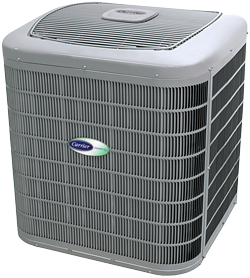At Ridge Energy Savers, we’re passionate about keeping your home cool and comfortable; but have you ever wondered how air conditioning, the modern marvel that we often take for granted, evolved over the centuries? Let’s take a journey through history to explore the fascinating development of air conditioning, from ancient cooling techniques to today’s advanced systems.
Ancient Cooling Methods: The Beginnings of Air Conditioning
Ancient Egypt: Early Cooling Techniques
The pursuit of cooling has ancient roots. In ancient Egypt, people used a variety of methods to combat the sweltering heat. One of the earliest forms of cooling involved placing porous clay jars filled with water in the wind’s path. As the water evaporated, it created a cooling effect, a primitive but effective form of evaporative cooling.
Roman Innovations: The Hypocaust System
The Romans were ahead of their time with the invention of the hypocaust system. This ingenious method used underfloor heating to warm public baths and homes, but it also highlighted the Romans’ understanding of climate control. By manipulating airflow and heat, they laid the groundwork for future innovations in temperature regulation.
Medieval and Renaissance Advancements: Cooling and Comfort
The Persian Ice Houses
In medieval Persia, ice houses or “yakhchals” were used to store ice and keep food cool. These structures were built with thick, insulated walls and ventilation systems to maintain low temperatures. They represent one of the earliest uses of thermal insulation and temperature control.
The Renaissance Period: Early Mechanical Cooling
During the Renaissance, the focus on improving comfort led to the development of early mechanical cooling methods. For instance, in the 16th century, scientists and engineers began experimenting with ice and snow to cool indoor spaces (though these methods were labor-intensive and limited in application).
The Industrial Revolution: Birth of Modern Air Conditioning
Early Innovations in Cooling Technology
The 19th century brought significant advancements in cooling technology. In 1902, Willis Haviland Carrier, often regarded as the father of modern air conditioning, invented the first air conditioning system. Carrier’s system was initially designed to control humidity and temperature in a printing plant, but its success led to the development of air conditioning for residential and commercial use.
The 20th Century: The Rise of Air Conditioning
Following Carrier’s invention, air conditioning technology rapidly advanced. The 1920s saw the introduction of residential air conditioning units, making home cooling accessible to more people. By the 1950s, air conditioning became a standard feature in homes and businesses, transforming the way we live and work.
Modern Marvels: Advanced Air Conditioning Technologies
Energy Efficiency and Smart Technology
Today’s air conditioning systems are marvels of modern engineering. Advances in technology have led to the development of energy-efficient systems, such as variable-speed compressors and smart thermostats. These innovations not only reduce energy consumption but also enhance comfort by adjusting cooling based on real-time data and user preferences.
The Future of Air Conditioning: What’s Next?
Looking ahead, the future of air conditioning promises even more exciting developments. Researchers are exploring new cooling technologies, such as advanced materials for passive cooling and innovations in heat pump technology. These advancements aim to provide even greater efficiency and environmental sustainability.
Conclusion
From ancient cooling methods to today’s cutting-edge systems, the evolution of air conditioning is a testament to human ingenuity and the quest for comfort. At Ridge Energy Savers, we’re proud to be part of this ongoing journey, providing you with the latest in air conditioning technology and expertise. Whether you’re interested in upgrading to a more efficient system or simply curious about the history of cooling, we’re here to help you stay cool and comfortable in every season.
If you have any questions or need assistance with your air conditioning needs, don’t hesitate to give us a call. Here’s to many more years of innovation and comfort!






